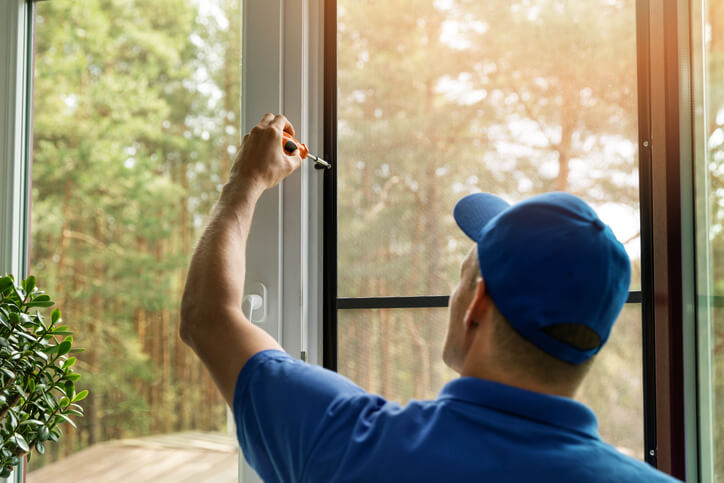Energy-Efficient Window Glass Replacement: Saving Money and the Environment
In pursuing sustainable living and cost-saving measures, homeowners increasingly use energy-efficient home solutions. Among these, upgrading to energy-efficient window glass is a significant yet often overlooked improvement. Not only does this upgrade help reduce energy consumption and cut utility bills, but it also plays a vital role in reducing our carbon footprint and contributing to environmental conservation efforts. This article delves into the various aspects of energy-efficient window glass, exploring its benefits, the process involved, and its impact on finances and the environment.
Understanding Energy-Efficient Window Glass
Energy-efficient window glass replacement is designed to minimise heat transfer between the interior and exterior of a building. Unlike traditional single-pane windows offering minimal insulation, energy-efficient windows typically feature multiple panes, low-emissivity (low-E) coatings, and gas fills between the panes. These features work together to improve thermal insulation, reduce heat loss during the winter, and minimise heat gain during the summer, thus enhancing overall energy efficiency.
Benefits of Energy-Efficient Window Glass Replacement
Reduced Energy Consumption: One of the primary benefits of upgrading to energy-efficient window glass is the significant reduction in energy consumption. By minimising heat transfer, these windows help maintain a more consistent indoor temperature, reducing the need for heating and cooling systems. It, in turn, leads to lower energy bills and increased savings over time.
Improved Comfort: Energy-efficient windows contribute to lower energy bills and enhance comfort levels within the home. By reducing drafts and maintaining a more stable indoor temperature, these windows create a more comfortable living environment year-round, regardless of external weather conditions.
Enhanced Durability and Longevity: Energy-efficient window glass is often more durable and condensation-resistant than traditional windows. Using multiple panes and advanced coatings helps improve structural integrity, preventing moisture buildup, mould growth, and condensation between window panes. This results in windows that maintain their performance and appearance for a more extended period, reducing the need for frequent replacements.
Noise Reduction: Energy-efficient windows offer better soundproofing capabilities besides improving thermal insulation. The multiple glass and gas fill layers are barriers to external noise, reducing sound transmission into the interior space. It can particularly benefit homes in noisy urban areas or near busy streets.
The Process of Window Glass Replacement
The process of upgrading to energy-efficient window glass replacement typically involves several steps:
Assessment and Consultation: The first step is to assess the existing windows and determine the most suitable energy-efficient options based on window size, orientation, and climate conditions. A consultation with a professional window contractor can help homeowners understand their options and choose the best solution.
Selection of Energy-Efficient Windows: Homeowners can select the type of energy-efficient windows that best fit their requirements once the assessment is complete. It may include double-pane or triple-pane windows with low-E coatings and gas fills, as well as features such as insulated frames and argon or krypton gas fills.
Installation: The installation involves removing the existing windows and installing the new energy-efficient units. It should be done carefully to ensure proper sealing and insulation around the window frame, minimising air leakage and maximising energy efficiency. Professional installation is recommended to ensure the job is done correctly and avoid potential issues or damage.
Sealing and Insulation: Proper sealing and insulation are crucial for maximising the energy efficiency of new windows. It may involve applying weather stripping around the window frame, using expanding foam insulation and ensuring a tight seal between the window and the surrounding wall. Attention to detail during this step can help prevent drafts and air leakage, optimising the performance of the windows.
Environmental Impact of Energy-Efficient Window Glass
Aside from the direct benefits to homeowners, upgrading to energy-efficient window glass also has significant environmental implications:
Reduced Carbon Emissions: Energy-efficient windows help decrease the demand for fossil fuels used in heating and cooling systems by reducing energy consumption. It translates to lower carbon emissions associated with energy production, contributing to efforts to mitigate climate change and reduce greenhouse gas emissions.
Resource Conservation: Energy-efficient windows require fewer resources to manufacture than traditional ones, as they are designed to be more durable and longer-lasting. It helps conserve natural resources and reduces the environmental impact associated with the production and disposal of building materials.
Improved Air Quality: Energy-efficient windows contribute to better indoor air quality by minimising drafts and preventing moisture buildup, which can lead to mould growth and air pollution. Enhancing the building envelope with tightly sealed and well-insulated windows ensures a healthier indoor environment for occupants.
Conclusion
Upgrading to energy-efficient window
glass is a practical and impactful step towards reducing energy consumption,
lowering utility bills, and minimising environmental impact. By investing in
energy-efficient windows, homeowners can enjoy improved comfort, durability,
and long-term savings while contributing to global efforts to combat climate
change and promote sustainability. With their myriad benefits, energy-efficient
windows stand as a testament to the power of tiny changes in creating a more
sustainable future for generations to come.





Post a Comment